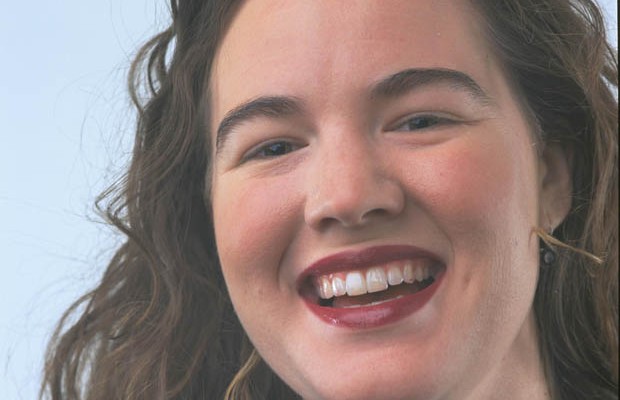Pearly Whites: Bright Teeth are Always in Style

Flash a dazzling smile and you exude confidence. But hide your grin behind your hand or duck your head when you laugh, and your self-consciousness is there for all to see. If your smile is less than confident because your teeth aren’t as white as they could be, you should know that help is as close as your dentist’s office.
Long gone are the days when only Hollywood stars could afford pearly whites. Advances in cosmetic dentistry give us more options than ever to keep our smiles shining. Nowadays, most dentists shy away from “caps,” the Hollywood-style crown that required grinding down the front teeth to nubs and positioning a crown over the nub. “If the tooth structure is intact, capping is too aggressive, because it requires grinding a healthy tooth structure down, and then it is gone forever,” says Dr. R. Kent Farnsworth, former president of the California Dental Association. “Because we always advocate the most conservative treatment possible, capping is not an option we like to consider.”
Instead, why not consider bleaching your teeth? If they’re undamaged and you don’t have gum disease, you may be a candidate for the procedure. Bleaching is “by far the most conservative method,” according to Farnsworth. In the bleaching process, custom-fitted bleaching trays are made, which are filled with carbamide peroxide-based gel, and typically worn for two hours each day for ten days. Termed “at-home” bleaching, this procedure typically costs $250-500 for both the upper and lower arches.
There are also a number of teeth-whitening products on the market, and while they’re not harmful, they also may not be effective. Bleaching works because the material stays in contact with the teeth without interference from saliva, food or liquid. Over the counter products don’t offer that option. According to Farnsworth, “Having bleaching done by your dentist is more predictable than buying a do-it-yourself kit or using a so-called ‘bleaching’ toothpaste.”
For those who want white teeth in a hurry, another option is “chairside” bleaching, which takes place in a dentist’s office. Carbamide peroxide is still used, but a laser speeds the process up by activating the material. Besides being more costly (typically $50 per tooth), Farnsworth expresses personal reservations about the procedure. “I’m not sure there’s not a possibility of doing damage to the teeth by bleaching them rapidly,” he says. “But we have years of clinical trials that show that at-home bleaching causes no damage to the teeth.”
While, according to Farnsworth, “Ninety percent of patients have no discomfort at all,” some people do have temporary thermal sensitivity – to hot or cold – following bleaching. This occurs because the teeth become slightly more porous during the process, but is easily remedied with a fluoride gel. And while microscopically, teeth become slightly more brittle after bleaching, your teeth – the hardest structures in your body – are really no more fragile than before.
A more invasive technique is to apply porcelain veneers to the front teeth. In that procedure, 1mm (about 1/16″) is drilled off the front of the tooth, and the dentist bonds a porcelain facing to the front and biting surface of the tooth. At a cost of $500 – $800 per tooth, veneers are an investment, but a viable option for those who have gaps between teeth, permanent stains (from, for example, tetracycline) or slightly crooked teeth.
Bonding, a procedure similar to veneers, utilizes tooth-colored resins that are attached to the tooth surface. The resin is applied, contoured into the desired shape and hardened using either a special light or chemical process. While less costly than veneers, bonding is also less durable, lasting three to five years.
Whichever procedure you may choose, just remember to keep on smiling!
Delve Deeper
Toothy Tips
Former California Dental Association President R. Kent Farnsworth offers these tips to keep your teeth healthy and bright:
- Avoid stains – “Teeth tend to stain due to the pigments in the foods we eat.” Culprits include coffee, tea, cola, ketchup, red wine and mustard.
- Regular checkups – Dental disease is preventable, and it’s much less expensive and painful to catch dental problems early. Twice yearly checkups are recommended for most people.
- Regular brushing – Brush twice a day.
- Floss, floss, floss! – Flossing gets into the area that brushing can’t reach. When dental problems develop, it’s most often in between the teeth.
- Watch what you eat – “What brings people into the office is chewing on ice, Corn Nuts and sticky gooey candy.” Also avoid letting sticky foods stay in contact with the teeth – not only candy, but raisins, breath mints and sugary gum as well.
- Eat your veggies – Celery sticks and carrots are “nature’s toothbrush” – fresh veggies are great for your teeth!
Navigating the Maze
The plethora of brushes, pastes and flosses on the market can leave a girl gnashing her teeth. Do the kinds we use really make a difference?
Toothbrush – To find the best brush for your teeth, consult with your dentist or hygienist, but generally a soft, round-tufted toothbrush causes the least amount of trauma to the mouth. Dr. R. Kent Farnsworth says, “Remember, it’s not a matter of scraping your teeth, it’s more like mopping your teeth on a consistent basis.”
Toothpaste – Dr. Farnsworth recommends a non-abrasive, fluoride-based toothpaste, but after that, it’s really a matter of taste. “If you like the taste of it, you tend to use it more often, which is good.”
Floss – Again, choose a floss based on your personal preference. Glide is a new, coated floss that slides right between those tight spaces and doesn’t fray.

0 comments